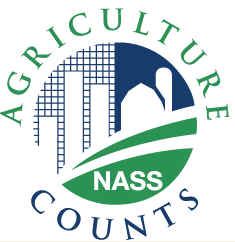ARMS Data Uses
2006_ARMS_data_uses.doc
Agricultural Resource Management, Chemical Use, and Post-harvest Chemical Use Surveys
ARMS Data Uses
OMB: 0535-0218
|
Uses of ARMS Data |
|
United States Department of Agriculture |
National
Agricultural Statistics Service (NASS) |
|
Did you know that virtually every federal policy and program that affects U.S. farmers is based on data from the Agricultural Resource Management Survey (ARMS)? ARMS is USDA’s primary source of information on the production practices, resource use and economic well-being of America’s farm households.
ARMS provides annual cost-of-production estimates required by Congress for more than 15 commodities covered under farm-support legislation.
ARMS provides data regarding chemical use on field crops as required by environmental and food safety laws such as the Food Quality Protection Act.
ARMS data underpin USDA’s estimates of net farm income and demonstrate agriculture’s contribution to the gross domestic product.
ARMS tracks farmers’ adoption of new technologies such as bio-engineered seed, livestock waste management practices, chemical and biological pest management alternatives, and information management technologies such as the internet and GPS.
USDA’s Office of Energy and New Uses relies on ARMS data to estimate farmers’ annual expenses for gasoline, diesel, natural gas, lp gas and other fuels.
ARMS enables USDA to calculate the parity prices that help regulate the federal marketing orders for more than 30 fruits, vegetables, nuts and specialty crops.
The Agricultural Marketing Service uses ARMS data in deriving its monthly cost-of-production estimates for milk production for the U.S. and five regions.
The Bureau of Land Management and the Forest Service use ARMS data to determine annual federal grazing fees on the nation’s public lands.
The Risk Management Agency uses ARMS data to understand levels of farm income and risk management tools used by farmers.
The Agricultural Research Service uses ARMS data to better understand the structural and production characteristics of farms and the demographic characteristics of farm operators for each of its research planning regions.
The Natural Resources Conservation Service uses ARMS data on production costs, input use, and technology adoption to assess the performance of conservation programs.
The Rural Business Cooperative Service uses ARMS to obtain information about the use of cooperatives by farmers.
The Cooperative Extension System uses ARMS-based data about farm sizes and types to better target farmer education programs.
ARMS: Better Data = Better Decisions
August 2006
| File Type | application/msword |
| Author | Ellen A. Dougherty |
| Last Modified By | Ellen A. Dougherty |
| File Modified | 2006-08-07 |
| File Created | 2006-08-07 |
© 2025 OMB.report | Privacy Policy

